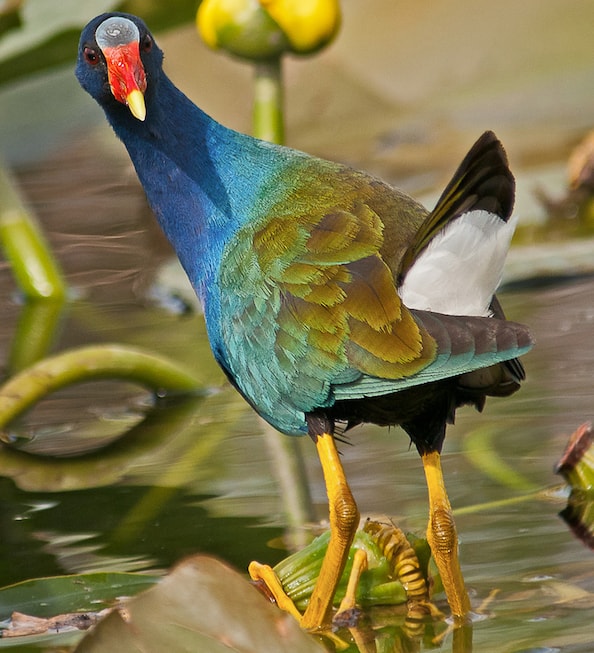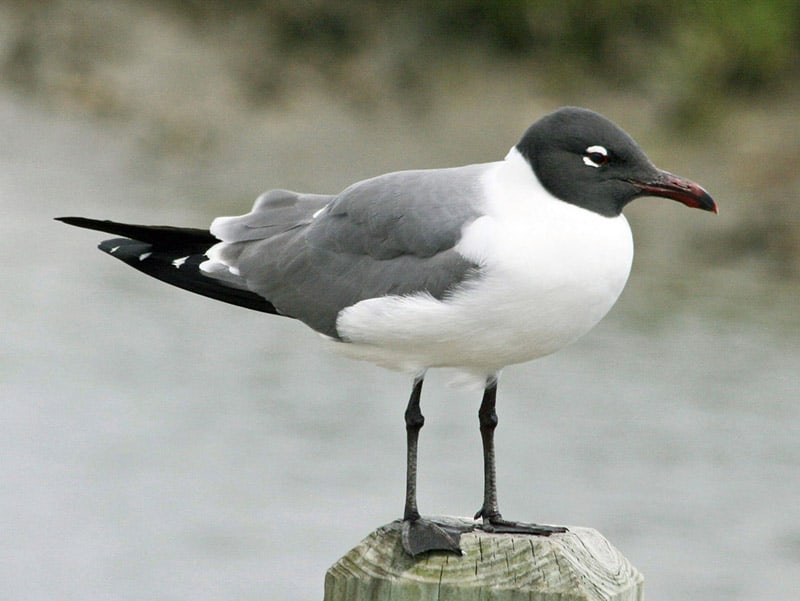What Does a Purple Gallinule Look Like?
The purple gallinule is medium-sized rail that is named for its bright, distinctive plumage. It has a deep bluish-purple head, neck, breast, and underparts that get darker as it reaches its rump. Its back is a dark iridescent green. It has a light blue patch on its forehead and a pointed, orange bill with a yellow tip. It has white undertail coverts and yellow legs with extremely long toes.
Listen for
The purple gallinule’s call is a low, grating clucking kuk-kuk-kuk that can sound similar to a chicken.
Find it
In the United States, the purple gallinule can be found in the Florida peninsula year-round. It also breeds along the coasts of the southern states as far north as South Carolina. These birds typically migrate south for the winter, settling in the Yucatan peninsula of Mexico and throughout Central America, especially along coasts.
Many purple gallinules also live year-round on the Atlantic and Pacific coasts of Mexico, in the West Indies, and in most of the southern and eastern South America. Throughout its range, look for it in shallow wetlands, including swamps, ponds, marshes, and pools.
Diet
The purple gallinule has a wide, diverse diet that includes many varieties of plants and animals: frogs, insects, fish, worms, snails, bird eggs, aquatic foliage, seeds, and berries. It forages by walking along the vegetation at the water’s edge, often using its long toes to balance on top of lily pads and other plants. It occasionally forages while swimming, snatching up whatever opportune meal it comes across.
Nesting Behavior
The purple gallinule builds its nest in low, dense marsh vegetation over water. Both sexes work together to make a large, bulky platform of grasses, cattails, stems, and leaves that sits securely at water level or a few inches above. The female lays 5-10 eggs that are a buffy or pinkish color with brown splotches.
Both parents incubate the eggs for 22-25 days before hatching. The parents often receive assistance in feeding and caring for the young from previously hatched offspring from an earlier brood. The young are able to fly and live relatively independently after nine weeks.
WOW!
Although this is a bird of the New World tropics, it wanders. It has turned up as far away as Canada, Europe, and Africa.




